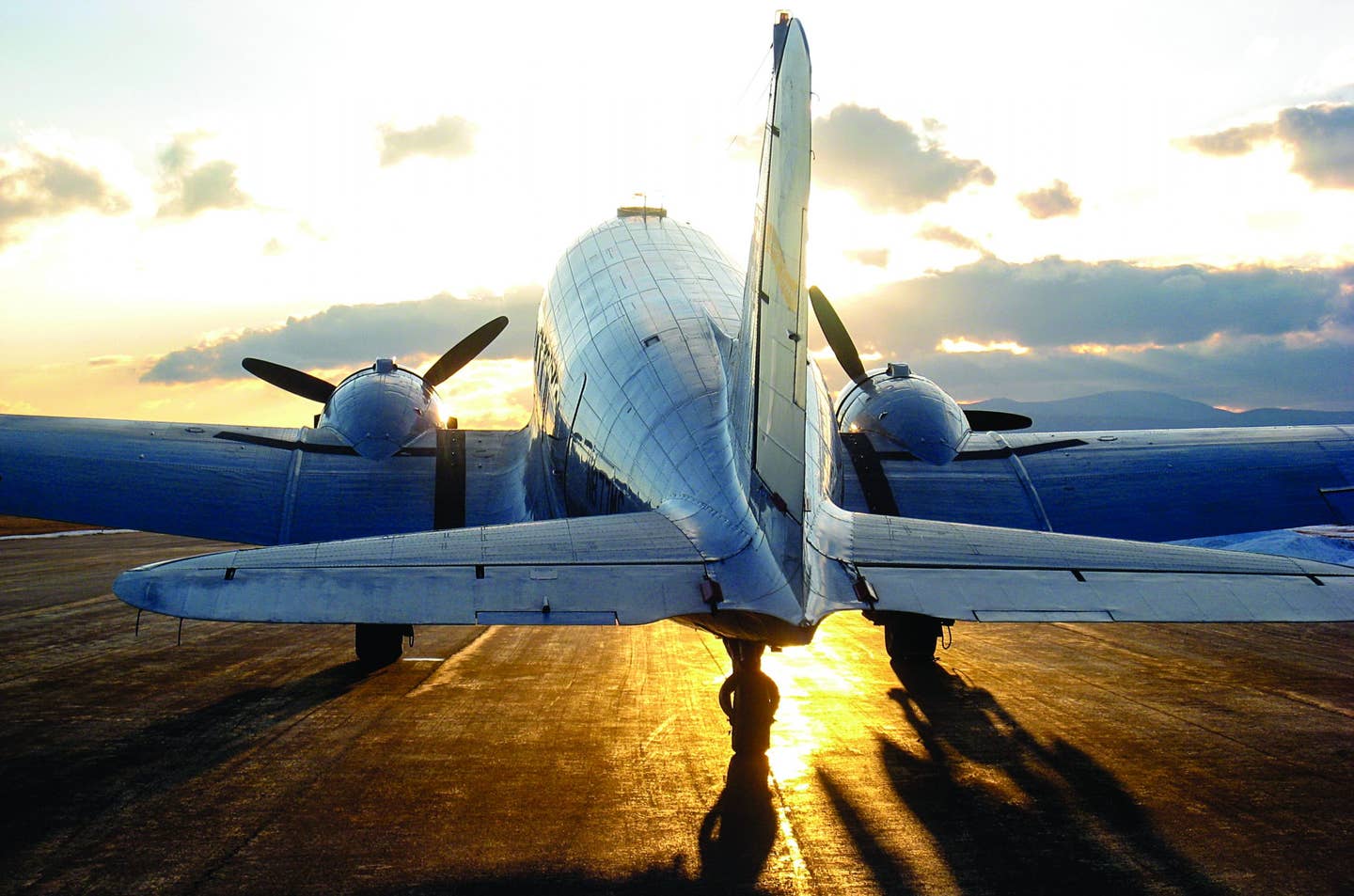
There are lots of ways that you could celebrate National Aviation Day, but is there a better way than getting in the cockpit of one of the most beautiful airplanes in the world? If money or time were no object, what would you want to spend the day surfing the clouds in?
Here’s what we’d pick:
Douglas DC-3
While the DC-3 has been out of production since the mid-1940s, there are many beautiful examples still flying. However, with a dwindling number of usable engines and the possible end to the 100LL fuel needed to feed them, the days of this historic airplane taking flight might be numbered—unless those engines get an upgrade to Pratt & Whitney PT6s.
North American P-51D Mustang
Part of the allure here comes from the visceral, hollowing whistle of the legendary World War II fighter’s 12-cylinder Rolls-Royce Merlin engine as it passes by at more than 400 mph. It’s also stunningly beautiful. Its long, slim nose, teardrop canopy and belly air scoop make it instantly recognizable. It arrived in Europe in 1944, becoming the Allies’ primary long-range escort fighter. In all nearly 8,000 were built.
Piper J-3 Cub
Things that are beautiful don’t always need to be paragons of design. Sometimes, the elements, however homey and simple, blend into a whole that is inexplicably, well, perfect. The Piper J-3 Cub (not the first Cub and certainly not the last) achieved the status of the light airplane archetype, its yellow painted doped fabric covering and black lightning bolt zip along the side creating a brand that was at once globally known and locally grown. Its recognition went beyond the airstrip. For a time “Piper Cub” became the popular parlance for “airplane,” for even non-pilots recognize a beautiful airplane when they see one.
Beechcraft Bonanza
When the subject of legendary light airplanes comes up, one of the names certain to be mentioned early in the conversation is the Beechcraft Bonanza. The latest model, the G36, bears a passing resemblance to the revolutionary original, which Beech Aircraft began selling way back in 1947. But today’s Bonanza is a very sophisticated platform, one that has enjoyed a wealth of improvements, from spinner to tail, over its 65-year production span. No other airplane has been able to achieve such a lengthy production record.
de Havilland DHC-2 Beaver
This is an airplane worshipped by bush pilots and rightfully so. As big as the Beaver is, with room for up to seven passengers, it requires only light control input and the three engine control levers in the center of the glareshield give the airplane a unique look and feel. The airplane’s rugged tailwheel design and ability to haul a heavy load make it impossible to beat in the backcountry. The sound of the Beaver’s nine-cylinder Pratt & Whitney and the beautiful shape of the fuselage put a smile on the face of anyone who loves airplanes.
Beechcraft King Air
Ten years after the successful Beech King Air 90 took to the skies, Beech Aircraft Corp. introduced the King Air 200 series in 1974. Powered by Pratt & Whitney’s reliable PT6, the twin-engine turboprop airplane was designed to carry eight to nine passengers. Known for its excellent carrying capacity, speed and durability, the 200 and 300 series were originally marketed as the “Super King Air” family. Beech has delivered more than 2,000 King Air 200s and another 600 Beechcraft 1900s—a model derived from the B200. It is no wonder the series is still alive after more than four decades.
Gulfstream G600
You want speed? The G600 has a maximum operating speed of Mach 0.925. It can achieve a long-range cruise speed of Mach 0.85 with eight passengers on board. During its testing, it made speed records for 11 city pairs. The cockpit also includes the Symmetry Flight Deck. Are we having fun yet?
Van’s RV-3
You might forget your first kiss, your first love or possibly even your first name, but you’ll never forget your first flight in an RV-3! (The RV-3 is the Van’s design that got the ball rolling.) Richard VanGrunsven’s first commercial design may well be his best. Originally designed in the late ‘60s, kits first became available by 1974. With a fully cantilevered wing and tail, the RV-3 set a new standard for performance in homebuilt aircraft and for ease of building. The only drawback of the RV-3: It has only one seat.

Sign-up for newsletters & special offers!
Get the latest FLYING stories & special offers delivered directly to your inbox






